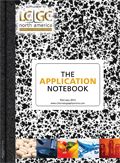Alcoholic Beverage Fusel Alcohol Testing with Static Headspace
Fusel alcohols, a common byproduct of fermentation, in abnormal quantities or types can indicate alcoholic beverage adulteration.
Fusel alcohols, a common byproduct of fermentation, in abnormal quantities or types can indicate alcoholic beverage adulteration. The Alcohol and Tobacco Tax and Trade Bureau of the US Department of the Treasury (TTB) method SSD:TM:200 (1) is a direct injection method which transfers all compounds into the inlet which may requre frequent liner changes. The quality control section of this method suggests changing the liner if the correlation coefficient (r2) falls below 0.99.
A static headspace method was developed using Teledyne Tekmar automated headspace vial samplers, the HT3 and Versa. Static headspace transfers only volatile compounds to the GC, leaving nonvolatile compounds in the headspace vial.
Experimental-Instrument Conditions
The HT3 was coupled to a GC/FID system equipped with a 624-type column, 30 m × 0.32 mm × 1.8 μm. The Method Optimization Mode (MOM) feature was utilized to determine the best headspace sample temperature for analysis.
Standard/Sample Preparation
The fusel oil stock standard was prepared following the SSD:TM:200 procedure. Working standards were prepared by diluting the stock standard with water. Samples consisted of 10 mL of the working standard or blank water.
Results and Discussion
The TTB QC requires a correlation coefficient (r2) of greater than 0.99 for all fusel alcohols. The r2 and the response factor percent relative standard deviation (Rf %RSD) were plotted for each compound at the various platen temperatures.

Table I: Results
A sample temperature of 70 °C best meets the TTB requirements of an r2 value of greater than 0.99 and an Rf %RSD of less than 10%. Table I lists these values for the corresponding compounds. A chromatogram of the lowest level standard is shown in Figure 1.

Figure 1: Chromatogram of the 0.2 level standard at 70 °C.
Conclusions
The current TTB method, SSD:TM:200 was easily converted to a static headspace method with the HT3 utilizing MOM to selecting the best sample temperature. A temperature of 70 °C provided excellent r2 and Rf %RSD values exceeding the current method r2 criteria of > 0.99.
The headspace method transfers only the volatile components of the sample while nonvolatile compounds, such as sugars that can quickly contaminate a GC liner and column, remain in the headspace vial. Benefits are two-fold, reducing a lab's budget by minimizing frequent column and inlet liner changes, as well as increasing instrument uptime. The HT3 or Versa automated headspace vial samplers can benefit beverage laboratories by increasing throughput.
References
(1) Capillary GC Analysis of Fusel Oils and Other Components of Interest, US Department of Treasury, Alcohol and Tobacco Tax and Trade Bureau, http://www.ttb.gov/ssd/pdf/tm200.pdf.
To download the full application note, please visit http://info.teledynetekmar.com/LCGCFuselAN

Teledyne Tekmar
4736 Socialville Foster Rd., Mason, OH 45040
tel. (513) 229-7000
Website: www.teledynetekmar.com

Analytical Challenges in Measuring Migration from Food Contact Materials
November 2nd 2015Food contact materials contain low molecular weight additives and processing aids which can migrate into foods leading to trace levels of contamination. Food safety is ensured through regulations, comprising compositional controls and migration limits, which present a significant analytical challenge to the food industry to ensure compliance and demonstrate due diligence. Of the various analytical approaches, LC-MS/MS has proved to be an essential tool in monitoring migration of target compounds into foods, and more sophisticated approaches such as LC-high resolution MS (Orbitrap) are being increasingly used for untargeted analysis to monitor non-intentionally added substances. This podcast will provide an overview to this area, illustrated with various applications showing current approaches being employed.
















